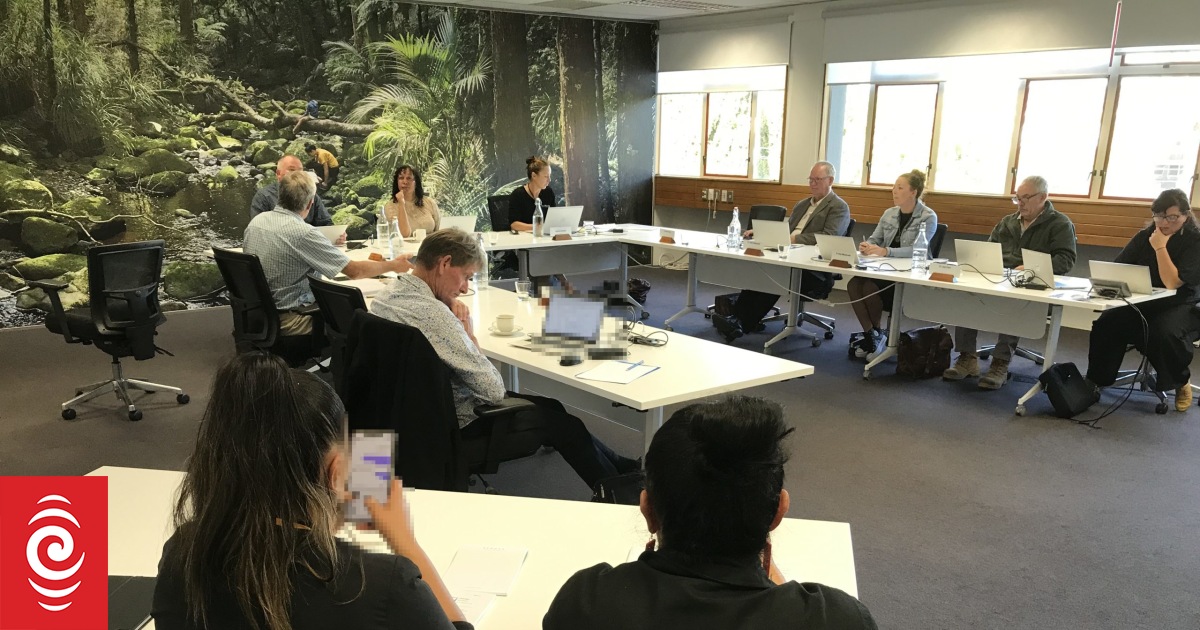Ngāti Hine leader Pita Tipene is hitting back at Prime Minister Chris Hipkins’ promise. Photo / Michael Cunningham
Prime Minister Chris Hipkins’ reassurance that Tai Tokerau will not be forgotten in the country’s Cyclone Gabrielle response has angered a Northland leader.
Pita Tipene (Ngāti Hine) said he felt angry and frustrated over Hipkins’ comments when he visited the region on Friday.
“Some of the reason Northland’s roading and other infrastructure is falling apart as a result of Cyclone Gabrielle is because there has not been sufficient investment into Northland infrastructure. The region has already been forgotten for decades.”
Prime Minister Chris Hipkins said it was his priority to make sure roads were rebuilt in a more resilient way during last week’s visit to Northland.
Advertisement
“I think the fact that I’m here within, you know, within the first two weeks after this event is a sign that Northland is absolutely not forgotten.
“We spend a lot of money as a country in recent times rebuilding roads that then get disrupted again, and you can never guarantee any one road is always going to withstand any event.”

Tipene said the situation the region now faced as a result of Cyclone Gabrielle served only to highlight that under-investment. The only recent funding of significance had been through the Provincial Growth Fund.
Appropriate solutions to Northland roading and wider transport infrastructure of all sorts were needed now, he said.
Advertisement
The Prime Minister said there needed to be a re-think of the ‘one road in, one road out’ concept that existed in many regions.
What was needed was a resilient roading network that included alternatives to road transport, such as the strengthening of railways and roads, Hipkins said.
Tipene said Tai Tokerau bore the brunt of tropical cyclones that hit New Zealand from the north.
“We’re always going to get battered,” he said.
Tipene claimed Tai Tokerau faced the same problems in this sense as Gisborne and East Cape, which were also hit hard by cyclones.
His comments came as a new cyclone near Fiji was officially named Cyclone Judy. Another potential cyclone in the Coral Sea was also being monitored by New Zealand weather watchers.
Cyclone Gabrielle’s impact in Te Tai Tokerau had made underfunded main roading options in and out of the north fragile, Tipene said.
/cloudfront-ap-southeast-2.images.arcpublishing.com/nzme/TNVZ4MJ4CRHLLAUCI3DMWNFDVI.JPG)
At the height of Cyclone Gabrielle, 212 roads across Northland were closed. That number increased to 378 when roads passable with caution, restricted to 4WDs or open only as a single lane were included.
Tipene said he would measure Hipkins’ promise Northland would not be left out in the Cyclone Gabrielle recovery effort by seeing how much strategic Government investment came to the North.
“What I don’t want to see is Northland be treated based on its ability to vote and get the Government into Parliament,” Tipene said.
Advertisement
He said it was interesting to view Tai Tokerau’s Government infrastructure spending in comparison with Southland, where money had been put into its aluminium smelter for some time.
The fact Māori comprised 33 per cent of the region’s population contributed to the Government funding underspend, Tipene said.
He believed Northland needed a proactive, high-level strategy going forward to beef up its infrastructure, and Government funding for this.
He said flooding was a major natural hazard with significant impacts on housing and people’s lives in the North.
Housing had also been a casualty of Christchurch’s earthquakes, and the Government had contributed to its recovery provision in that city.
“What’s the difference between [a] flood and [an] earthquake in the sense that people are still going to be impacted?” Tipene said.
Advertisement
Northland Civil Defence identifies localised heavy rain and flooding as the region’s biggest hazard risk, along with severe widespread storms – both of which are in the region’s top three highest-ranked hazards. Transport/supply chain disruption, electricity failure and telecommunications failures are, in addition, all also in the top half of its list of 24 ranked hazards facing Te Tai Tokerau.
Local Democracy Reporting is Public Interest Journalism funded through NZ On Air.



